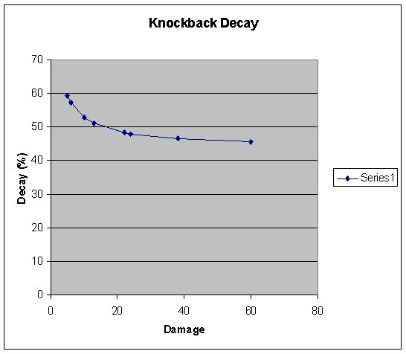Hey guys, what you are listing as "w2" is vertical acceleration.
If you want to check, run comparisons between Ness, Lucas, and Pit.
The more you know.
This doesn't make a whole lot of sense to me. Although my research isn't 100% concrete, I had thought I had least figured out all the basics from testing. From what I've seen, there is no such thing as "acceleration" in brawl. This is especially true considering we're talking about launch speed here. I'm quite sure that launch speed is just the force with which your character is launched. It's nothing fancy (besides the fact that it's also used for calculating hitstun). After the initial force is applied to your character, another force is constantly applied in the opposite direction of that force until they cancel out. This opposite force is applied starting straight from frame 1, so although I have called launch speed "the number of units you travel on the first frame of knockback" in the past, this is not quite accurate.
All forces in brawl are either applied initially or continuously. If you're rising due to a jump or something similar, you rise less each frame because the jump force was applied once, and gravity is applied each consecutive frame. When the jump force is extinguished, you fall at a constant rate equal to gravity, which is a separate calculation from the jump calculation that was going on the previous frames. This force is applied once and there is no other force that is applied to counter it. It's the same thing with fastfalls - you immediately start falling at the new rate. Additionally, knockback and fallspeed are two completely separate calculations and neither has an effect upon the other. I haven't investigated horizontal motion yet, so I can't comment on that. I can say with confidence, however, that it is also a completely separate calculation.
Do you guys have a Gecko? I just did it frame by frame on a tall custom stage with wavebirds on the same channel. This was ages ago though...
Hm, very interesting. How did you perform this test? Like, did you just have everyone start on a tower made of stage builder blocks and then run off the side? Everything I've seen so far seems to have supported that characters fall at a constant rate in the air due to gravity. If there is any acceleration, it has to be
incredibly minuscule, considering it took the same number of frames for a character to travel each of 4 stage builder blocks in my tests. Even if it didn't last for long, the first should've taken more time to travel than the others if there was acceleration.
 . Geeze it's harsh.....
. Geeze it's harsh..... . Geeze it's harsh.....
. Geeze it's harsh.....

